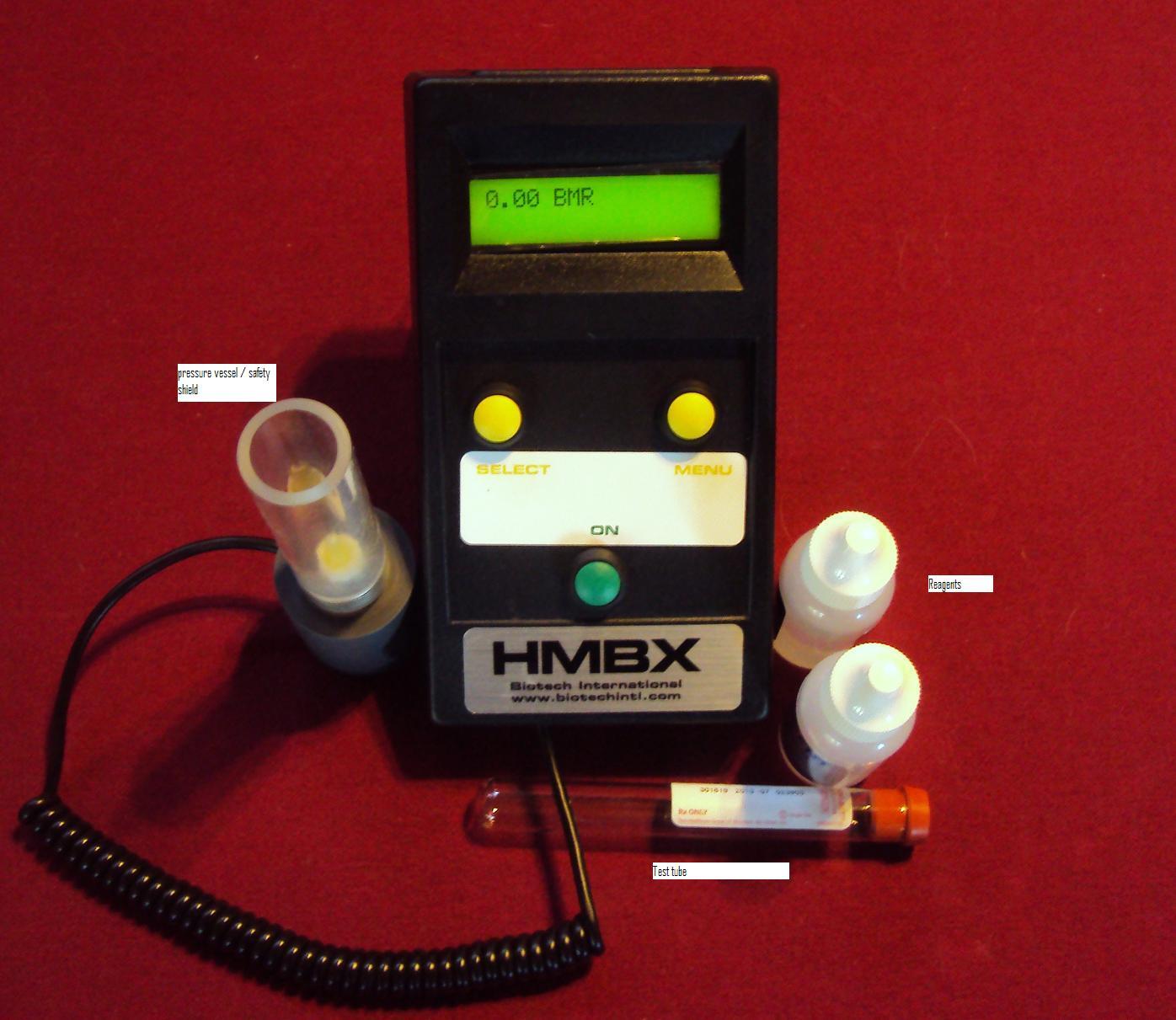Monitor Biological Activity with the BioTech HMB Tester to Detect Contamination in Real-Time
Dealing with Biological Activity in Metalworking Fluids
Bacterial contamination contributes to a host of problems in metalworking fluids: Offensive odors, corrosion, reduced tool life, and endanger the health of operators. Detecting increases in biological activity in real-time (15 minutes) allows preventive action before these problems occur. The HMB X hand-held tester and its associated metalworking test kit is a simple, easy-to-use, cost effective way to do just that. This technology from BioTech is being used in some 20 countries during the past 30 years.
Theory of Operation
There are essentially two methods, both indirect, for gaining information about aerobic microbial populations: Growth and Biochemical.
The traditional manner (Growth method) by which the contamination level of microbes is determined, is to take a sample of the fluid to be tested, dilute it appropriately, streak it onto a nutrient plate, incubate for 24-72 hours, manually count the colonies that grew, then back-calculate (from the known dilution ratio) the concentration in the original sample. This was the method of Pasteur and it has changed little; the principal modern improvements coming in the nutrient selections available. The assumption made when using growth methods is that each viable organism will multiply sufficiently during the incubation to produce one (and only one) colony visible to the naked eye. The result of this examination is expressed in COLONY FORMING UNITS PER MILLILITER (CFU/ML). Growth methods are called COUNTS. They are, in fact, not really counts but are estimates of the density of organisms with a published precision of around + 30 percent.
Biochemical tests (HMB) measure the level of some marker molecule that is produced in metabolic activity or in reproductive activity. They are, therefore, measures of ACTIVITY. Activity and counts are not the same measurement. Both are useful, often complementary, but, in a given system there may or may not exist any useful correlation (important).
The HMB test is based on the fact that aerobic organisms produce a category of enzymes called peroxidases while metabolizing, and it is the level of peroxidase that is measured by the HMB test. Peroxidases are produced in proportion to the rate of biological activity. Thusly, the quantity of enzyme present in a sample is a measure of the current total biological activity. In the HMB procedure, the reagent reacts with the enzyme to produce oxygen. The oxygen produced is measured by the HMB and converted to BIOMASS RANGE (BMR). Precision associated with biochemical tests is about + 3%.
Because enzymes work very fast, the reaction happens within minutes making the results available in essentially real-time (15 minutes). The test is simple, meant to be used by persons with little or no laboratory experience.
The aforegoing is not meant to criticize one method or applaud the other. Both tests are useful in context and are, in fact, often used in a complementary fashion.


